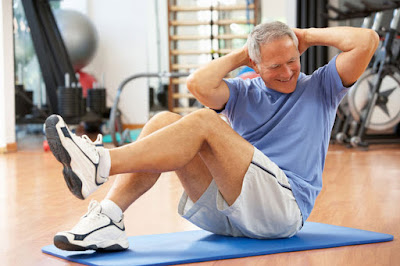PILATES:
Pilates is a method of exercise that consists of low-impact flexibility and muscular strength and endurance movements. Pilates emphasizes proper postural alignment, core strength and muscle balance. Pilates is named for
Pilates is a method of exercise that consists of low-impact flexibility and muscular strength and endurance movements. Pilates emphasizes proper postural alignment, core strength and muscle balance. Pilates is named for
Health benefits of Pilates
- improved flexibility
- increased muscle strength and tone, particularly of your abdominal muscles, lower back, hips and buttocks (the ‘core muscles’ of your body)
- balanced muscular strength on both sides of your body
- enhanced muscular control of your back and limbs
- improved stabilization of your spine
- improved posture
- rehabilitation or prevention of injuries related to muscle imbalances
- improved physical coordination and balance
- relaxation of your shoulders, neck and upper back
- safe rehabilitation of joint and spinal injuries
- prevention of musculoskeletal injuries
- increased lung capacity and circulation through deep breathing
- improved concentration
- increased body awareness
- stress management and relaxation.VIA WOMENSHEALTHMAG.CO.UKCIRCUIT TRAINING:

 Circuit training is a form of body conditioning or endurance training or resistance training using high-intensity. It targets strength building or muscular endurance. Circuit training is the ideal way to go if you want to loose fat while maintaining or even increasing you muscle size and strength. Circuit training usually involves machines, but can be carried out with dumbbells, barbells, balls or body weight exercises.AEROBICSAerobics is a form of physical exercise that combines rhythmic aerobic exercise with stretching and strength training routines with the goal of improving all elements of fitness (flexibility, muscular strength, and cardio-vascular fitness). It is usually performed to music and may be practiced in a group setting led by an instructor (fitness professional), although it can be done solo and without musical accompaniment. With the goal of preventing illness and promoting physical fitness, practitioners perform various routines comprising a number of different dance-like exercises.
Circuit training is a form of body conditioning or endurance training or resistance training using high-intensity. It targets strength building or muscular endurance. Circuit training is the ideal way to go if you want to loose fat while maintaining or even increasing you muscle size and strength. Circuit training usually involves machines, but can be carried out with dumbbells, barbells, balls or body weight exercises.AEROBICSAerobics is a form of physical exercise that combines rhythmic aerobic exercise with stretching and strength training routines with the goal of improving all elements of fitness (flexibility, muscular strength, and cardio-vascular fitness). It is usually performed to music and may be practiced in a group setting led by an instructor (fitness professional), although it can be done solo and without musical accompaniment. With the goal of preventing illness and promoting physical fitness, practitioners perform various routines comprising a number of different dance-like exercises.
STRENGTH TRAINING* BODY-WEIGHT EXERCISES*WEIGHT TRAINING Strength training is generally divided in two parts .Strength training is a type of physical exercise specializing in the use of resistance to induce muscular contraction which builds the strength, anaerobic endurance, and size of skeletal muscles.
Strength training is generally divided in two parts .Strength training is a type of physical exercise specializing in the use of resistance to induce muscular contraction which builds the strength, anaerobic endurance, and size of skeletal muscles.
SPRINTINGSprinting is running over a short distance in a limited period of time. It is used in many sports that incorporate running, typically as a way of quickly reaching a target or goal .Sprint training includes various running workouts, targeting acceleration, speed development, speed endurance, special endurance, and tempo endurance. Additionally, athletes perform intense strength training workouts, as well as plyometric or jumping workouts. Collectively, these training methods produce qualities which allow athletes to be stronger, more powerful, in hopes of ultimately running faster.
SWIMMING
Swimming is a good all-round activity because it: keeps your heart rate up but takes some of the impact stress off your body. builds endurance, muscle strength and cardiovascular fitness. helps maintain a healthy weight, healthy heart and lungs.Health benefits of swimming
Swimming is a great workout because you need to move your whole body against the resistance of the water.
Swimming is a good all-round activity because it: - keeps your heart rate up but takes some of the impact stress off your body
- builds endurance, muscle strength and cardiovascular fitness
- helps maintain a healthy weight, healthy heart and lungs
- tones muscles and builds strength
- provides an all-over body workout, as nearly all of your muscles are used during swimming.
- being a relaxing and peaceful form of exercise
- alleviating stress
- improving coordination, balance and posture
- improving flexibility
- providing good low-impact therapy for some injuries and conditions






No comments:
Post a Comment